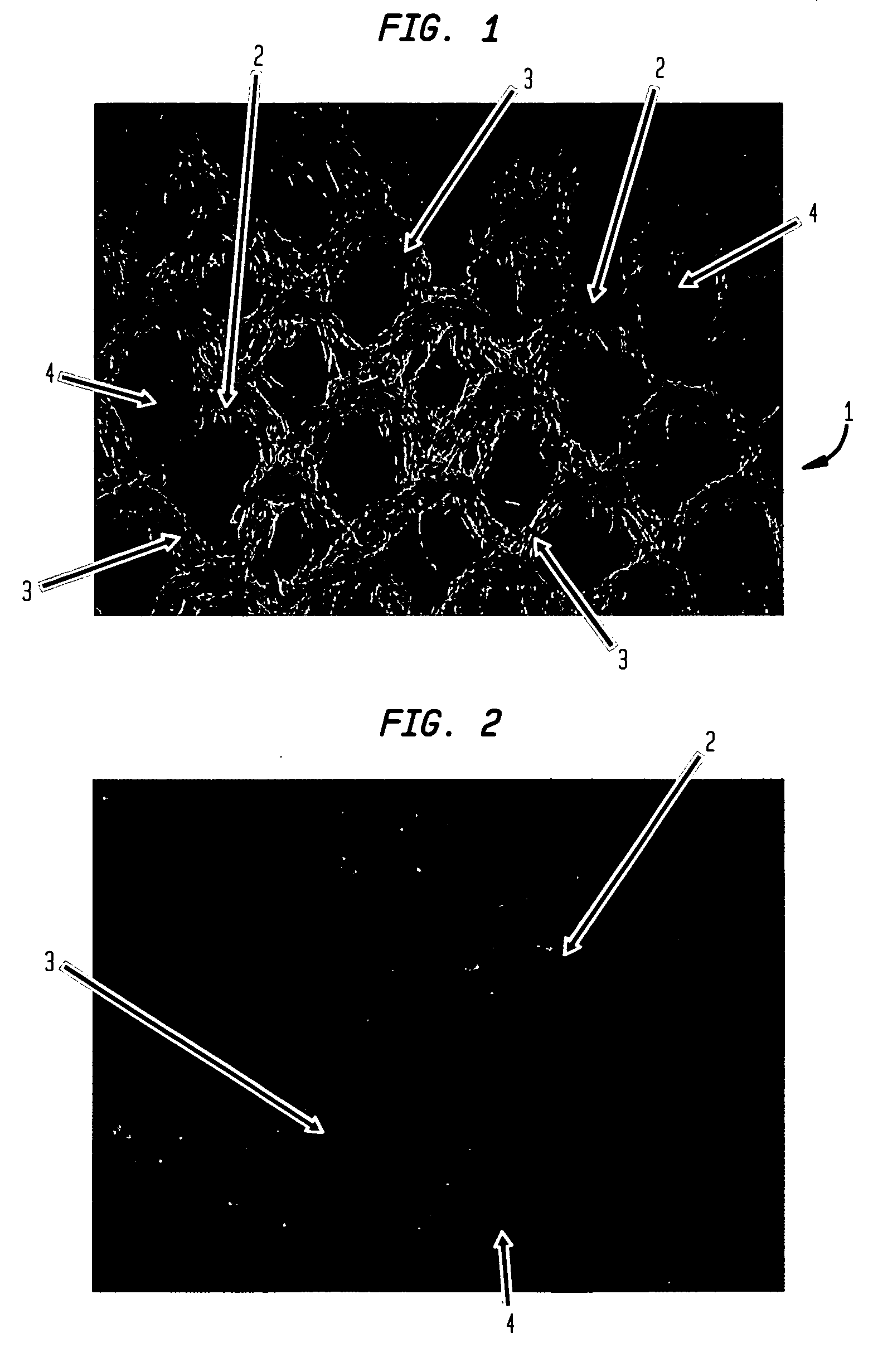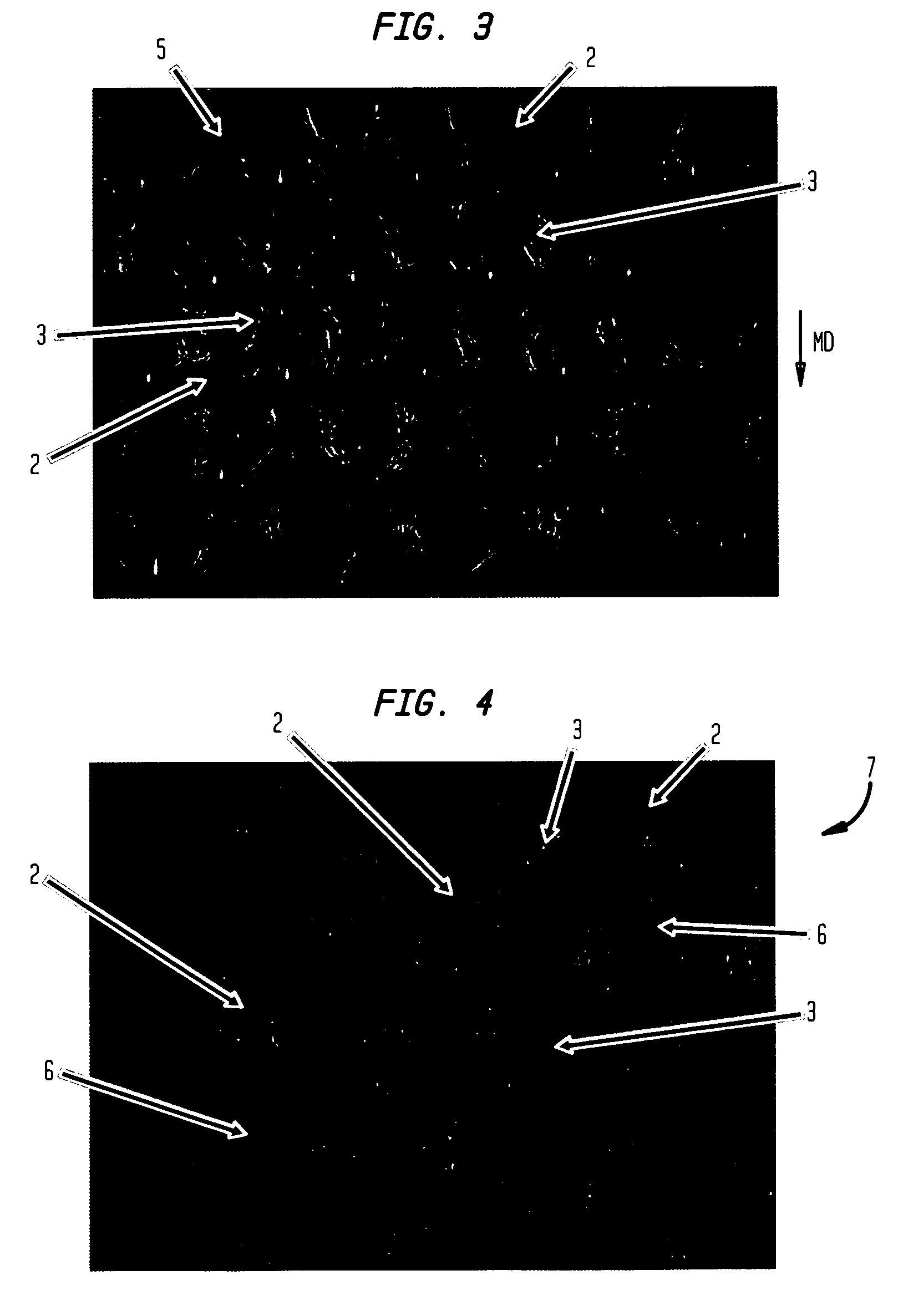Fabric crepe process for making absorbent sheet
a fabric and absorbent sheet technology, applied in the field of absorbent sheet papermaking processes, can solve the problems of affecting the effect of fabric creping process, affecting the quality of absorbent sheet, and difficulty in effectively transferring a web of high or intermediate consistency, etc., and achieves high speed operation, high jet velocity impingement, and high transfer speed
- Summary
- Abstract
- Description
- Claims
- Application Information
AI Technical Summary
Benefits of technology
Problems solved by technology
Method used
Image
Examples
Embodiment Construction
[0074]The invention is described in detail below in connection with numerous examples for purposes of illustration only. Modifications to particular examples within the spirit and scope of the present invention, set forth in the appended claims, will be readily apparent to those of skill in the art.
[0075]The invention process and products produced thereby are appreciated by reference to FIGS. 1 through 18. FIG. 1 is a photomicrograph of a very low basis weight, open mesh web 1 having a plurality of relatively high basis weight pileated regions 2 interconnected by a plurality of lower basis weight linking regions 3. The cellulosic fibers of linking regions 3 have orientation which is biased along the direction as to which they extend between pileated regions 2, as is perhaps best seen in the enlarged view of FIG. 2. The orientation and variation in local basis weight is surprising in view of the fact that the nascent web has an apparent random fiber orientation when formed and is tra...
PUM
| Property | Measurement | Unit |
|---|---|---|
| surface velocity | aaaaa | aaaaa |
| absorbency | aaaaa | aaaaa |
| surface velocity | aaaaa | aaaaa |
Abstract
Description
Claims
Application Information
 Login to view more
Login to view more - R&D Engineer
- R&D Manager
- IP Professional
- Industry Leading Data Capabilities
- Powerful AI technology
- Patent DNA Extraction
Browse by: Latest US Patents, China's latest patents, Technical Efficacy Thesaurus, Application Domain, Technology Topic.
© 2024 PatSnap. All rights reserved.Legal|Privacy policy|Modern Slavery Act Transparency Statement|Sitemap



